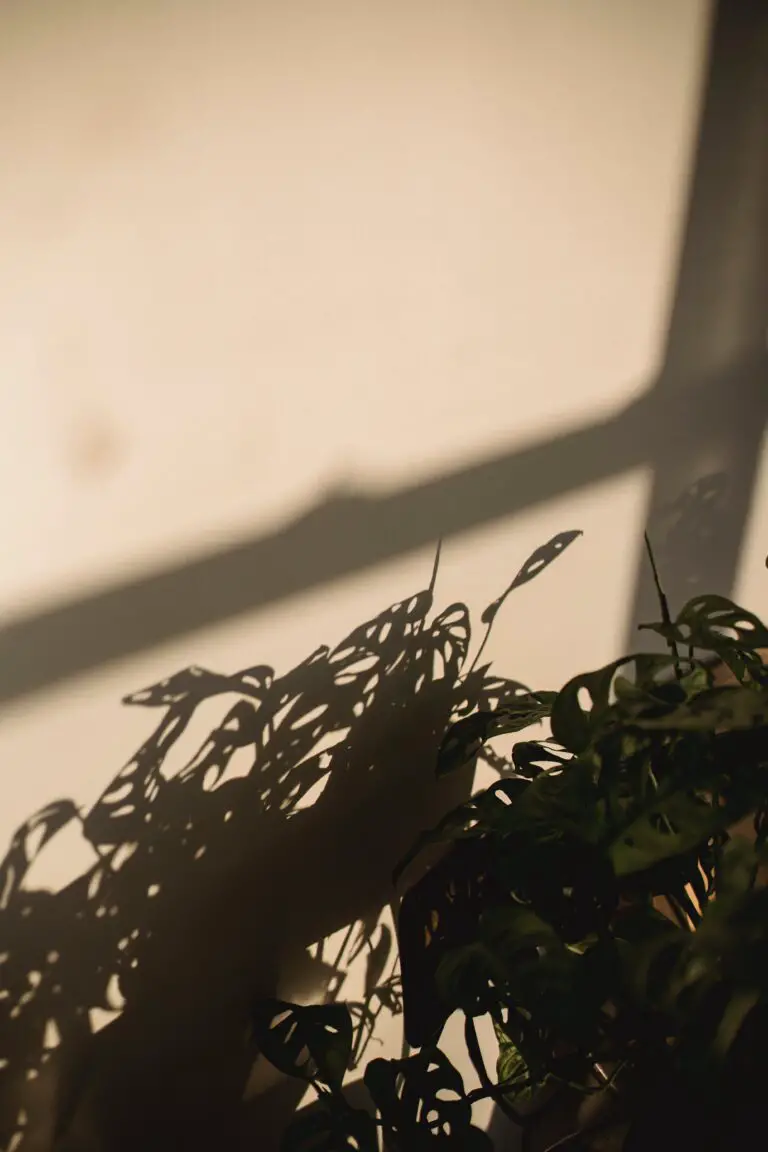Introduction to Indoor Sedum Gardening
Curious about sprucing up your interior spaces with a touch of greenery that’s both vibrant and low-maintenance? Welcome to the world of Sedum, a genus of succulent plants that’s swiftly climbing the popularity charts as an indoor favorite. As you embark on your botanical journey with these charming succulents, it’s time to unravel what makes sedum an excellent choice for home gardeners and plant enthusiasts alike. Let’s dig into the basics of nurturing these resilient plants in the comfort of your indoors.
Renowned for their hardiness and versatility, sedums are an ideal candidate for those venturing into the realm of indoor gardening. Whether you’re a seasoned green thumb or a novice looking to add a splash of life to your living area, the allure of sedums is undeniable. These succulent beauties require minimal fuss, making them a perfect sidekick for the hustle and bustle of modern life. Imagine coming home to a soothing succulent oasis that asks so little yet gives so much back – from their alluring leaf textures to the promise of blooms, sedums are a true gem for indoor plant aficionados.
Exploring the ins and outs of indoor succulent care can be a refreshing endeavor. Picture this: You’re transforming your humble abode into a miniature greenhouse, where each stonecrop becomes a living sculpture. The variety of sedum species offers a palette of shapes, colors, and sizes, ensuring that you find the perfect match for your interior design theme. From the cool tones of ‘Blue Spruce’ to the warm hues of ‘Autumn Joy’, the potential to create a captivating indoor garden is practically limitless.
Incorporating sedums into your home isn’t just about aesthetics; it’s a lifestyle choice that embraces the essence of bringing nature indoors. They’re reliable companions that stand the test of time, requiring only a sunny window sill and an occasional watering to thrive. Plus, they’re champions of clean air, subtly improving the quality of your indoor environment one breath at a time. Ready to see these sturdy succulents in action? Check out this helpful video for key insights on growing sedum indoors.
As the trend of indoor gardening continues to bloom, the sedum’s stature as a top contender for home horticulture is solidified. It’s a plant that graciously adapts to our hectic schedules, bringing serene beauty to our living spaces. Embarking on a sedum-growing journey is more than cultivating plants; it’s about cultivating joy, tranquility, and a greener lifestyle. So why not breathe life into your indoor sanctuary with the verdant charm of sedum? It’s a simple yet profound step towards a more enriching home-bound experience.
Selecting the Right Sedum Variety for Indoor Conditions
Embark on a quest to find the perfect indoor companion among the diverse sedum species. Not all heroes need capes; some just need the right pot! For those seeking to add some green to their indoors, understanding the vast sedum family is imperative. Whether it’s the delicate, cascading Sedum morganianum, commonly known as the Burro’s Tail, or the robust Sedum reflexum that resembles a mini conifer forest, each has unique traits that make them more or less suitable for your living space.
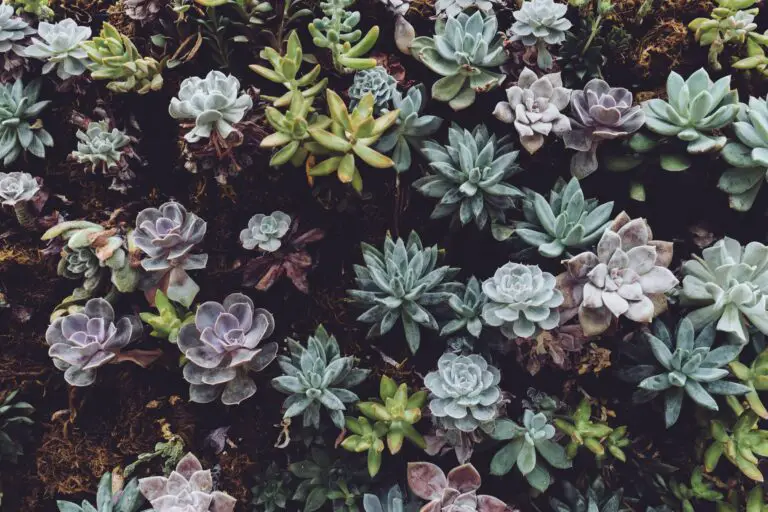
Choosing an indoor sedum plant doesn’t have to mimic a complex puzzle. As the gardening gurus suggest, consider the lighting of your soon-to-be succulent sanctuary. Is your abode blessed with sunlight, or does it have the ambiance akin to a cozy cave? Fear not; for each scenario, there’s a sedum waiting to flourish. Take for example, Sedum kamtschaticum, which can tolerate lower light conditions, albeit with less zest than when bathed in sunlight.
Picture yourself leisurely sipping your morning brew, admiring your mini stonecrop oasis. It’s not just about survival; it’s about watching your sedum thrive and be a testament to your indoor gardening prowess. With the right choice, your sedums could be the talk of the town or at least a conversation starter with your cat. If you’re eager to learn more about nurturing these resilient beauties, meander over to this enlightening page on how to care for indoor succulents.
Remember, when selecting your sedum, think about texture, color, and growth habits. Whether it’s the soft, plush foliage of Sedum spathulifolium or the vibrant, star-shaped flowers of Sedum rupestre, ensure your indoor ecosystem reflects your own slice of paradise. After all, these enduring plants are not just survivors—they are surefire spectacles of nature’s splendor right in your living room.
Essential Care for Sedum Indoors: Light and Location
Embracing the lush foliage of sedum in your indoor space is a game-changer for plant enthusiasts. The vibrant greens and vivid textures of these succulents can freshen up any room’s look! But, the real secret to unlocking the voluminous beauty of indoor sedums? It’s all about the light and the prime real estate you provide for them inside your cozy nest.
Now, picture this: A sedum basking in the gentle morning light by an east-facing window – that’s your green buddy’s version of paradise. You see, sedums are sun-loving spirits. Giving them plenty of indirect, bright light will keep their leaves full and their spirits high. If you’ve got a window that captures the soft, indirect light of the morning or late afternoon, you’ve hit the jackpot for your leafy friends.
And here’s where the magic of the solar ballet dazzles: as the seasons tiptoe from spring to winter, the light waltzes and weaves through your home differently. You’ll need to become a bit of a light detective, tracing the sunbeams’ path to place your sedums in the spotlight they deserve—all year round.
Think about it. In the heat of summer, that sweltering midday sun through a southern window might just be a bit too intense, like an overzealous spotlight on our plant performers. During these sultry months, pulling the curtains to cast a light diffusing barrier, or nudging your pots a few feet from the window can prevent a leafy sunburn. When the world cools down and winter cloaks your home, though, that southern window becomes a welcoming sunbeam stage for your sedums to thrive.
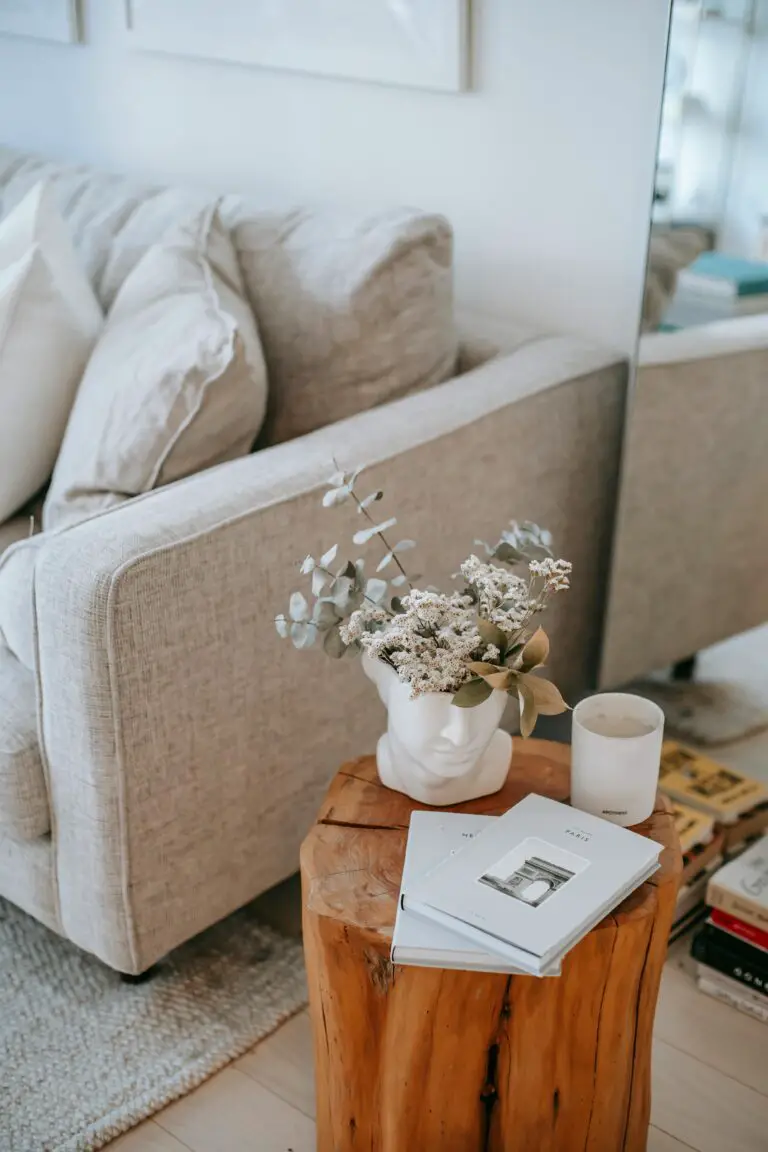
And while we’re chatting about location, it’s not just about finding the sunny sweet spot. It’s also about making that spot fit effortlessly into your life. Want some inspiration for turning your living spaces into a verdant paradise? Take a journey through our guide to indoor succulent plants for ideas on how to weave natural beauty into your everyday.
So go ahead, play around with positions and windows in your home. Observe how your sedum responds to that cozy nook or the lively ambience near your bookshelf. With some trial and error and a splash of patience, you’ll find the perfect tableau for your indoor sedum to flourish, ensuring that your green thumb gets a thumbs up!
The Perfect Potting Mix and Containers for Sedum
So, you’ve decided to venture into the world of indoor sedum cultivation! Let’s kick things off with a green thumb deep dive into creating the ideal home for your stonecrop. Just like crafting a custom suit, your sedum needs a potting mix tailored to its unique needs. And don’t forget—the container is like the tie that brings the whole outfit together!
Imagine your sedum as a little Goldilocks. The potting mix? It has to be just right! Too heavy, and the roots will drown; too light, and they’ll thirst for more. Your secret weapon to success? A airy mix that walks that fine line between drainage and moisture retention. Mix voyeurs, take note: a blend with coarse sand, peat, and perlite tends to hit that sweet spot for our succulent friend!
Finding the Pot that Rocks
Now onto the crowning glory, the container. Picking the right pot is akin to choosing the right shoes for an A-list event — it should complement and support without stealing the show. Think breathable, think drainage. A terracotta pot is to sedum what glass slippers were to Cinderella—a perfect fit, letting air flow and moisture escape like no other.
And here’s a little nugget of wisdom: size matters! Too big, and you risk excess soil moisture playing the villain, leading to root rot. Too petite, and you’re strangling those roots, stifling your sedum’s chance to thrive. Aim for a container that leaves just enough room for growth, like a snuggly hug, ensuring your plant baby sits just right.
Put this planter potion and pot pairing to work, and you’ll be the proud parent of a sedum that not only survives indoors but reaches headline-stealing, paparazzi-flashing heights of indoor plant fame. And speaking of fame, check out this must-see video that distills all this potting wisdom into a visual feast of tips and tricks!
${video}
${video_embed_code}
Watering Regimen for Sedum: How Much Is Just Right?
Imagine this: You’re holding a watering can, your green buddy Sedum quietly basking in the indoor sun. Now what? Pour, sprinkle, or just admire? Well, when it comes to hydrating your resilient Sedum indoors, it’s like walking a tightrope – too little, and they pucker; too much, and their feet get soggy. Let’s dive into the art of striking the perfect balance, making your indoor stonecrop thrive with zest!
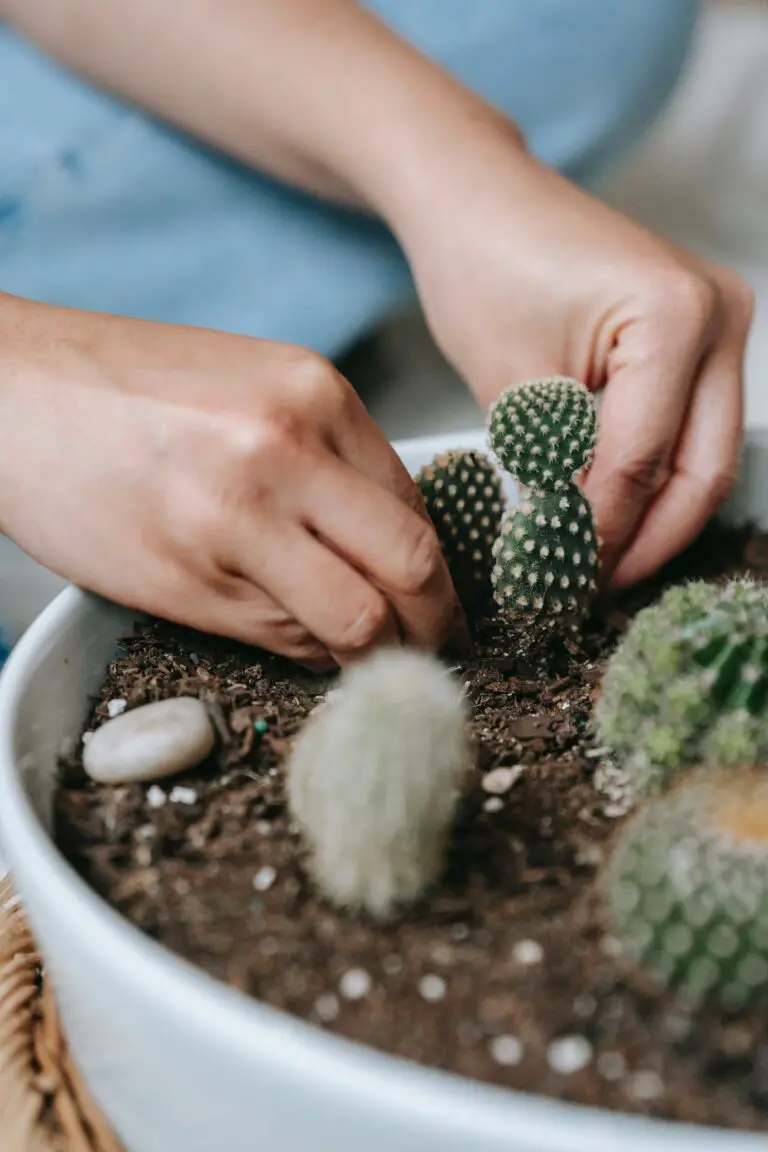
Soaking the Thirst, Drying the Roots
Enter the ‘soak and dry’ method, a holy grail for succulent parents. Picture this: your Sedum’s soil is parched, much like a desert. Now’s the time to be generous, give it a soak until water runs free from drainage holes. But hold your horses – don’t go reaching for the watering can again until the soil is completely dry. This method ensures your Sedum gets deep watering, encouraging robust root growth, while also preventing dreaded root rot. It’s like a hearty feast followed by a good, long nap.
Timing is Everything
While it’s tempting to water on a schedule, Sedum plants indoors prefer a ‘wait and see’ approach. Check the soil – is it dry an inch deep? If yes, it’s showtime for watering! If not, come back another day. This sets a rhythm – maybe once a week, perhaps bi-monthly, all depending on your home’s temperature, light, and humidity. It’s not about the calendar; it’s about reading the signs of your leafy friend. Keep it guessing; keep it growing.
The Right Amount of H2O
How much water, you ask? Imagine giving your Sedum a shot glass of water versus a swimming pool. It seeks the middle ground. The goal is to saturate, not flood. Aim for enough water to reach the bottom – typically a couple of cups for a small to medium pot. Picture watering like a gentle rainfall, not a monsoon. Your Sedum will show its gratitude with vibrant leaves and happy roots.
Temperature and Humidity: Crafting the Ideal Climate Indoors
When it comes to creating a cozy habitat for your indoor sedum, temperature and humidity step into the spotlight. Not too hot, not too cold, sedum plants demand a “Goldilocks” climate to thrive—think springtime in the Mediterranean! Here, we’ll dive into crafting that perfect indoor garden ambiance so your sedum can bask in climate-controlled bliss.
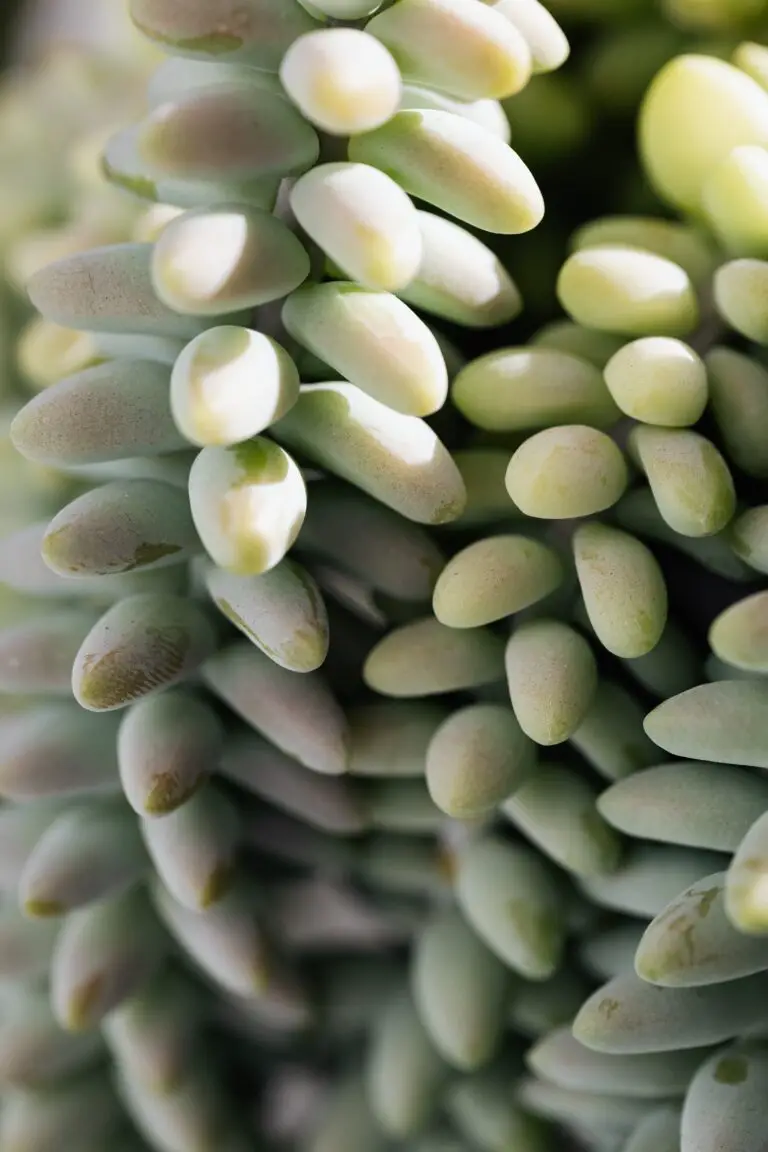
First things first, sedums prefer daytime temperatures hovering around 65-75°F (18-24°C). As nightfall sneaks in, they’re quite comfortable with a slight dip to 50-60°F (10-15°C). However, let’s not shiver our way to extremities; sedum has a “chill” factor, but frosty conditions will leave their succulent leaves sulking.
Now, let’s talk humidity. Sedum does the happy dance in dry air, making it a perfect roommate for our sometimes-stuffy indoor world. To keep the air around your sedum as crisp as autumn, consider using a dehumidifier or simply placing it near a thirsty companion like a cactus. This will help maintain that ideal aridity without turning your home into a desert.
Real-life scenario—your kitchen or bathroom might just be the secret garden spot for your indoor sedum, especially if they’re well-ventilated spaces. It’s all about maintaining steady conditions without swinging into the extremes—easier than balancing a checkbook!
In summary, by monitoring temperatures and tweaking humidity levels, you can create the ultimate indoor haven for your sedum. Just imagine your sedum thriving as it would in nature—without the need to weather the elements. Now that’s indoor gardening done right!
Fertilizing Indoor Sedums: Nutrition for Growth and Health
Welcome to the green-thumbed world of sedums, those resilient little stonecrop plants that bring a touch of the wild outdoors into our homes. When nestled in their pots and basking in the warmth of your living room, these succulent plants can often fool us with their hardy demeanors. But even the toughest of houseplants needs a sprinkle of TLC when it comes to nutrition. So, let’s get down to business: do sedums need fertilizer to thrive indoors? Absolutely!
Imagine your indoor sedum as a miniature athlete in the plant world. It may not be sprinting around the pot, but it’s constantly training to put out its best show of lush leaves and vibrant blooms. The secret to its performance? A well-crafted diet. And that’s where fertilizer steps in, playing the role of a dietary coach for our potted companions.
Choosing the Right Fertilizer for Your Indoor Sedum
The best nutrient mix for your indoor sedum is akin to choosing the healthiest smoothie blend for yourself. You wouldn’t just toss anything into the blender, right? Similarly, sedums prefer a balanced diet, low in nitrogen to avoid overly rapid growth that could lead to weak, leggy plants. Something with a higher proportion of phosphorus and potassium will promote strong roots, healthy foliage, and those delightful star-shaped blooms that sedums are known for.
Organic options like fish emulsion or seaweed extract are to plants what a gourmet meal is to us—a feast packed with all the good stuff. But if you’re after convenience, balanced, water-soluble fertilizers mixed at half the recommended strength do the trick just fine. These are especially suited for indoor sedums since they’re less likely to build up harmful salts in the potting mix.
Nourishing Your Indoor Sedum: When and How
Timing is everything! Sedums are active growers during the spring and summer, so align your fertilizing schedule with their growth cycle. A monthly treat during these seasons will satisfy their hunger. When the winter chill sets in, your sedum prefers to fast, entering a state of dormancy. This is your cue to put away the fertilizer bottle and let it rest.
Now, don’t go drenching your sedum in a nutrient bath. Applying fertilizer is like seasoning food—just the right amount brings out the best flavor. Use a diluted solution, gently poured around the base of the plant, taking care to avoid the leaves to prevent burn. It’s a simple gesture, but it goes a long way in ensuring your sedum stays perky and prosperous through the year.
And remember, folks, moderation is key. Over-fertilizing can do more harm than good, overwhelming your sedums with too much love. Stick to a light touch and watch your green buddy flourish—the satisfaction of seeing that lush foliage is akin to winning the gardening Olympics!
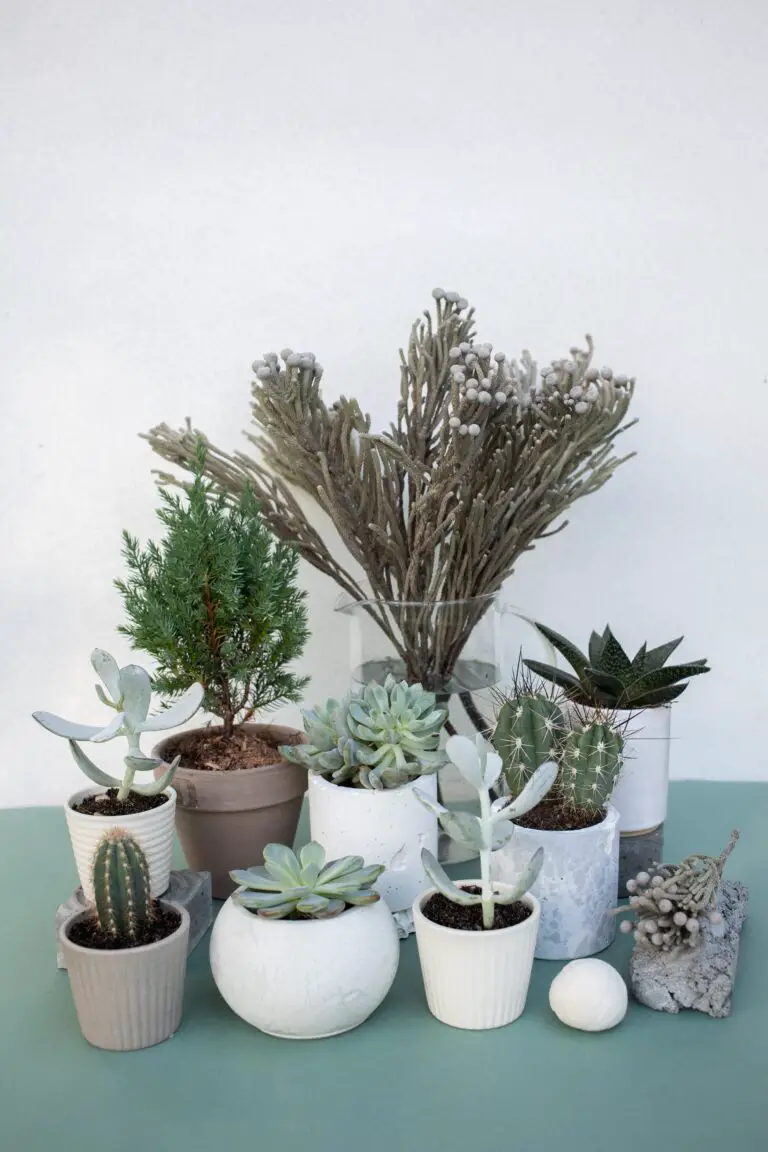
Pruning and Maintenance: Keeping Your Sedum Tidy
If you’re curious about can I grow sedum indoors, you’ll be pleased to know that not only is it possible, but with the right tricks, it’s a breeze. Just like any relationship, the one with your indoor sedum—also known as “Stonecrop”—requires a bit of tender care, especially when it comes to pruning. Pruning is like giving your plant a haircut, and who doesn’t enjoy a refreshing new look?
Imagine this: You’ve got your trusty shears in hand, and your indoor sedum is looking a little too wild, a bit unruly. It’s time to channel your inner gardener, trim those overgrown sections, and encourage your green pal to sprout new, vibrant leaves. Pruning isn’t just about aesthetics; it’s crucial for plant health, allowing better airflow and reducing the risk of disease. Now, let’s dive into the how and when of pruning your indoor sedum.
When to Prune Your Indoor Sedum
The best time to prune your sedum is in the early spring before new growth starts. This is when your plant is waking up from its winter slumber, gathering energy to burst forth with new life. But don’t fret if you miss spring pruning—sedum is forgiving. A mid-summer trim can also do wonders, managing growth and giving your plant an extra push for a dense and lush appearance.
How to Prune Your Sedum
Step one: sanitize your pruning shears. A quick wipe with rubbing alcohol prevents any disease from crashing your pruning party. Begin by removing any dead or damaged leaves—these are usually discolored or wilted. Next, step back and look for areas that are overshadowing others, preventing light from reaching the lower leaves. Snip these overzealous growers to even things out. Remember, it’s about guiding your sedum’s shape, not giving it a buzzcut!
If you’re aiming for a more compact shape, target the longest stems. Cutting them back to just above a leaf node encourages bushier growth and keeps your sedum happily contained within its pot. Keep an eye out for leggy growth—a telltale sign your sedum is reaching for more light. If that happens, consider relocating it to a brighter spot after pruning to address its sun-seeking behavior.
To keep you on track, here’s a video demonstrating sedum pruning techniques that are sure to make your indoor gardening journey smoother:
Apart from regular pruning, routine maintenance of your indoor sedum involves removing any fallen debris from the pot and ensuring its soil doesn’t turn into a compacted, waterlogged mess. With these simple steps, your sedum will not only stay tidy but will also thrive, reminding you that, yes, you can grow sedum indoors—and do it with style!
Troubleshooting Common Indoor Sedum Problems
Just like that friend who’s always up for an adventure but somehow ends up with a twisted ankle, your indoor sedum can run into its fair share of hiccups. Let’s put on our detective hats and get to the root of the most common sedum dilemmas you might face indoors.
Battling the Bug Brigade
Imagine this: you’re enjoying your morning coffee, and you notice tiny bugs treating your sedum like a five-star resort. Aphids, mealybugs, and spider mites can invite themselves over without notice. These pests suck the sap from your plants, weakening them and causing leaves to yellow or drop. If you spot an insect convention on your sedum, it’s time to take action! Wash them away with a gentle spray of water or introduce natural predators like ladybugs into the mix.

The Perils of Root Rot
Root rot can sneak up like a ninja in the night, often due to overenthusiastic watering. Remember, your indoor sedum’s roots are not scuba divers; they dislike soggy conditions. When the roots sit in wet soil for too long, they start to decay. To prevent this soggy disaster, ensure your pot has drainage holes, and let the soil dry out between waterings. If you lift the pot and it feels like you’re picking up a bowling ball, it’s time to ease up on the H2O.
When Leaves Take the Leap
If your sedum’s leaves are taking a dive off the stem and littering the soil like confetti after a parade, it’s a sign of distress. It could be environmental stress from changes in light or temperature, or perhaps a watering mishap. Sedum prefers stability, so find that sweet spot where it can bask in bright, indirect sunlight and enjoy consistent temperatures, and stick to it like glue.
Remember, growing sedum indoors doesn’t have to be a rocky journey. With attention to these details and preventative measures, you’ll keep your leafy companion sprightly and robust. Before you know it, your sedum will be the thriving centerpiece of your indoor garden, bringing a piece of the great outdoors into your home.
Propagating Sedum: Expanding Your Indoor Garden
Are you looking to expand your indoor garden with some succulent flair? Sedum, commonly known as Stonecrop, might just be the perfect candidate for your indoor oasis. Let’s dive into the art of propagating these hardy beauties right in the comfort of your home. Propagation might sound like a term best left to the botanists, but in reality, it’s a simple, yet rewarding garden hack that’ll have you growing green with success!
First things first, the easiest method to propagate sedum is through leaf cuttings. It’s as simple as snapping off a healthy leaf from an existing plant and letting it do its magic. Lay the leaf on well-draining soil and with a bit of patience and consistent moisture, tiny roots will start to appear. It’s a bit like sedum Snapchat, where leaf selfies transform into an entirely new plant – no filters needed!

Division is another method to increase your sedum stock, ideally suited for those plants that have grown large and lush. Carefully split your sedum into sections, ensuring each has a decent chunk of roots, and plant them separately. It’s like moving out of your parents’ basement – a little space to grow can lead to thriving independence.
When it comes to the best practices for nurturing your freshly propagated sedum, consistency is key. A bright spot, well-draining soil, and occasional watering when the soil feels dry are all it takes to ensure your sedum offshoots grow up to be strong and healthy. Imagine them as little green athletes in training – no steroids, just the right environment and nutrition to help them flourish naturally.
Remember, propagating sedum is not just about multiplying your plant count—it’s about engaging with nature in the most hands-on way. Each new offshoot is a living testament to your gardening prowess, ready to add lushness and life to every corner of your indoor space. So, go ahead, get those hands dirty and let the sedum propagation journey begin!
Design and Decor: Creative Ways to Display Your Sedum Indoors
So, you’ve decided to bring the resilient beauty of sedum, also known as stonecrop, into your home. Congratulations, you’re about to embark on a journey with one of the most versatile and low-maintenance plants perfect for indoor gardening enthusiasts! Now let’s talk about how you can showcase these succulent gems in a way that not only breathes life into your living space but also reflects your personal style.
Imagine walking into a room where hints of greenery catch your eye from every corner, creating a serene and inviting atmosphere. This isn’t just a dream—it’s entirely possible with sedum! To start, consider unconventional planters like vintage teacups, mason jars, or even repurposed light bulbs. These can be placed on shelves, mantels, or in hanging arrangements, adding a burst of nature to your indoor landscape. And if you’re feeling particularly crafty, why not design a living wall that will be a focal point of any room?
Think outside the (planter) box and combine sedum with other plants to create a mini indoor garden. They play well with other succulents and cacti, so mix and match textures and colors for an eclectic and visually stunning display. A terrarium, for instance, can serve as a miniature botanical world on your desk or coffee table. It’s not just about the plants; it’s about creating an experience—a little slice of nature right in the heart of your home.
For those who enjoy a more minimalist approach, a single sedum plant in a sleek geometric pot can make a powerful statement. It’s all about the contrast—soft organic lines of the plant against the sharp angles of modern decor. Keep the color palette simple, allowing the sedum to be the star of the show.
Inspiration is everywhere, and the following video offers some unique ideas to get your creative juices flowing. Watch and discover fresh, imaginative ways to incorporate sedum into your indoor environment.
To wrap things up, your sedum doesn’t have to be just another plant in a pot; it can be an ever-evolving piece of living art. Rotate planters, mix in seasonal accents, and experiment with different placements to keep your space dynamic and interesting. Remember, growing sedum indoors is not just about adding greenery; it’s about crafting an environment that uplifts, inspires, and transforms your indoor living space into a sanctuary.
Frequently Asked Questions
Embarking on a journey to nurture sedum indoors can stir up a flurry of questions for any plant aficionado. Let’s dive into some of the most common conundrums plant parents face when welcoming this resilient succulent into their home ecosystem.
How Often Should I Repot My Indoor Sedum?
Imagine this: your sedum has been a trusty green companion for a year and has sprouted new, lush growth. It’s time to consider repotting. Typically, sedum plants prefer a snug pot, but every 12 to 18 months, you’ll want to give them a bit more elbow room. Choose a pot only slightly larger than the current one to avoid overwhelming your plant with too much space. This can lead to excess moisture and potentially a root-rot rave—totally not cool for your sedum buddy.
Can Sedum Survive Indoors Without Much Sunlight?
Sedum plants, often referred to as stonecrop, are like the sun-bathing beauties of the plant world. They crave those golden rays! If your abode isn’t showered in sunlight, fear not. A grow light can be a game-changer, mimicking the sun’s benefits and keeping your sedum’s spirits high. Positioning your plant near a south-facing window can also help capture any available light. However, don’t forget to rotate the pot regularly for even growth and to prevent a leaning Tower of Pisa situation.
Are Sedums Safe Around My Furry Friends?
Our pets are beloved members of our families, and it’s crucial that they coexist safely with our plant collection. Luckily, sedums are generally non-toxic to cats and dogs. So, if Fido takes a curious nibble or Whiskers paws at the leaves, you can rest easy knowing there won’t be any pet emergencies. Still, it’s always wise to keep an eye out and discourage munching on your greenery for the sake of both your pet’s and plant’s well-being.
Now that we’ve uprooted some answers to these indoor sedum curiosities, you can feel more confident in caring for your stonecrop sanctuary. Remember that these low-maintenance succulents are adaptable and can thrive in the cozy confines of your living space with a little know-how and lots of love.
